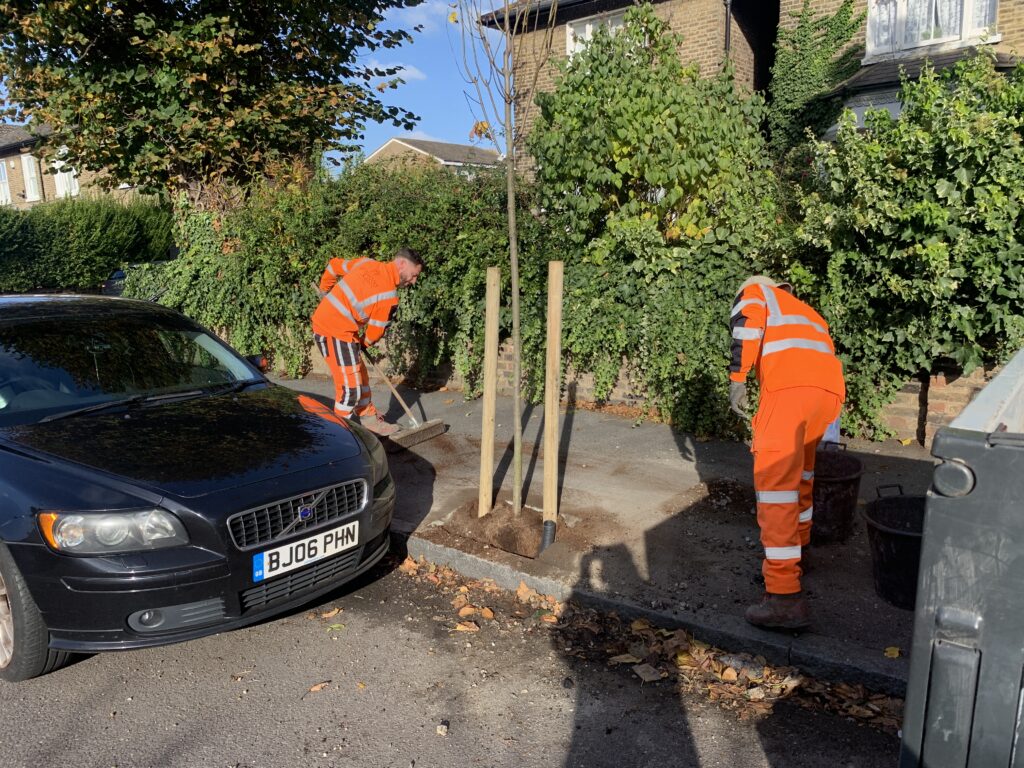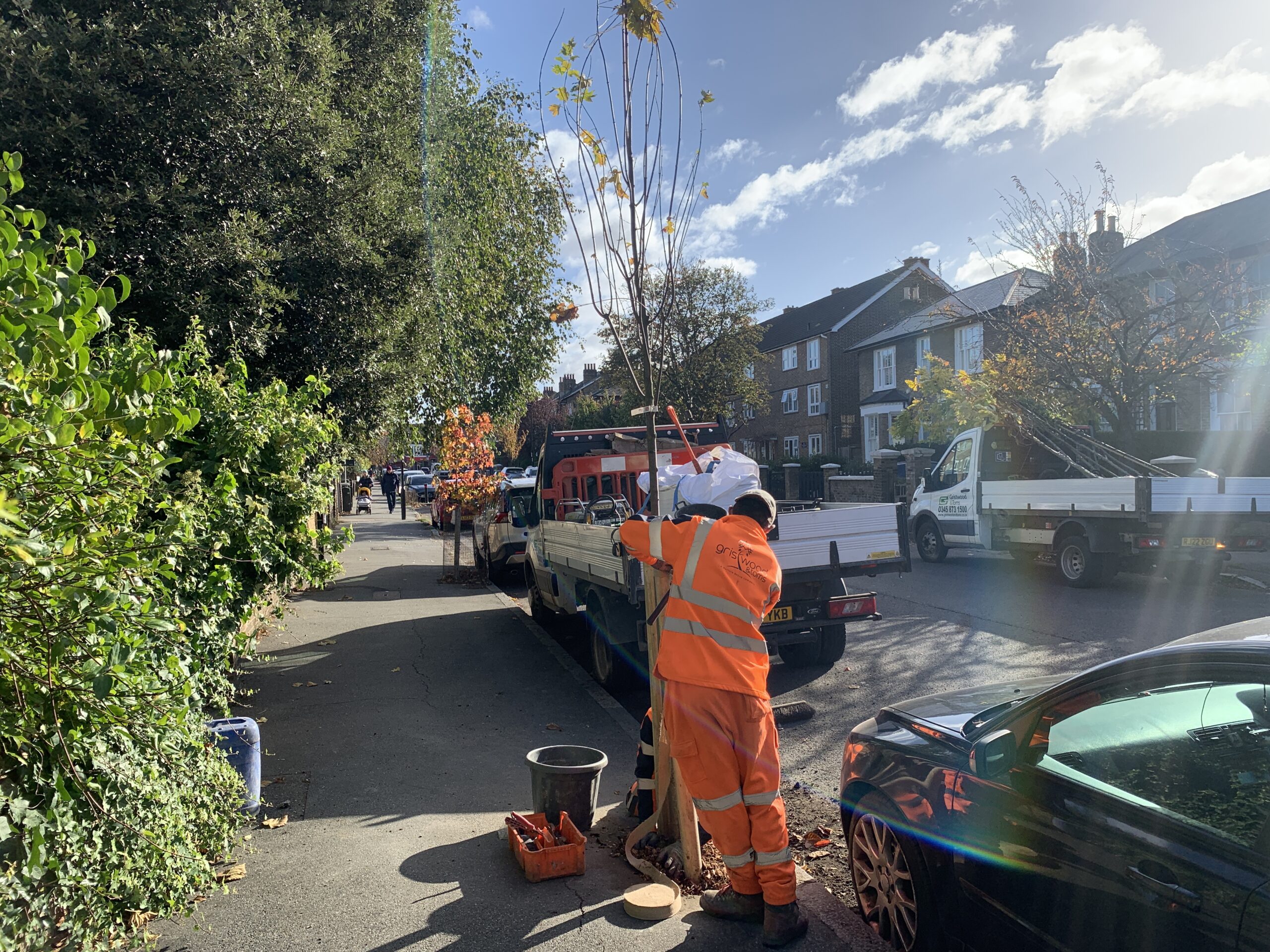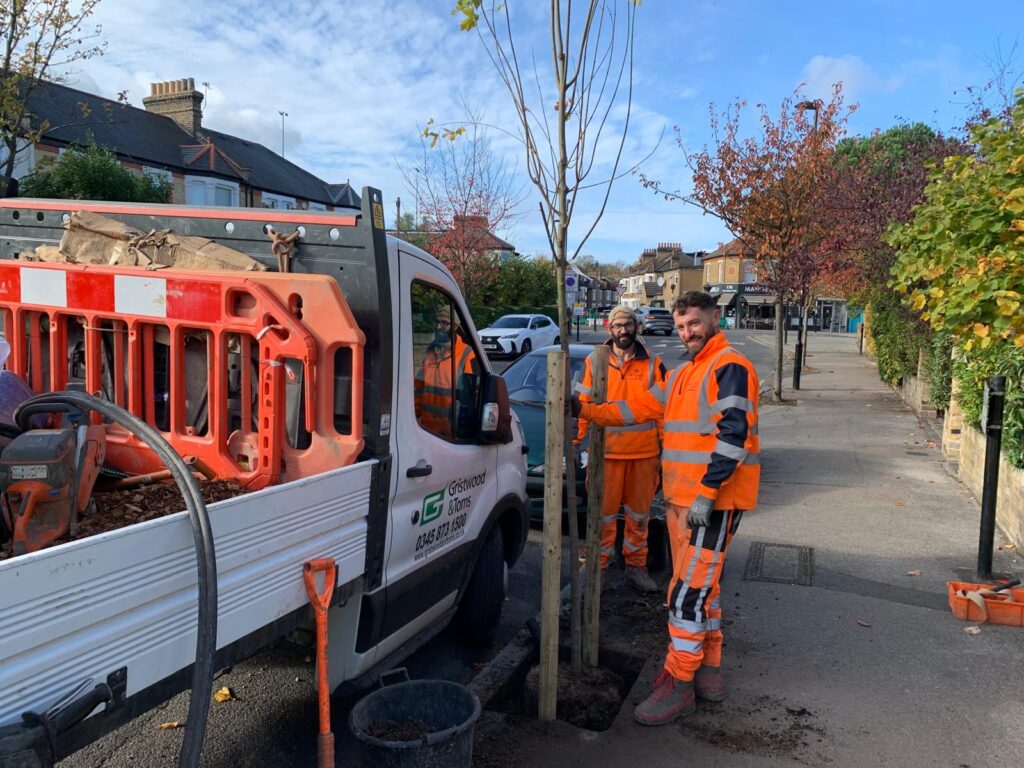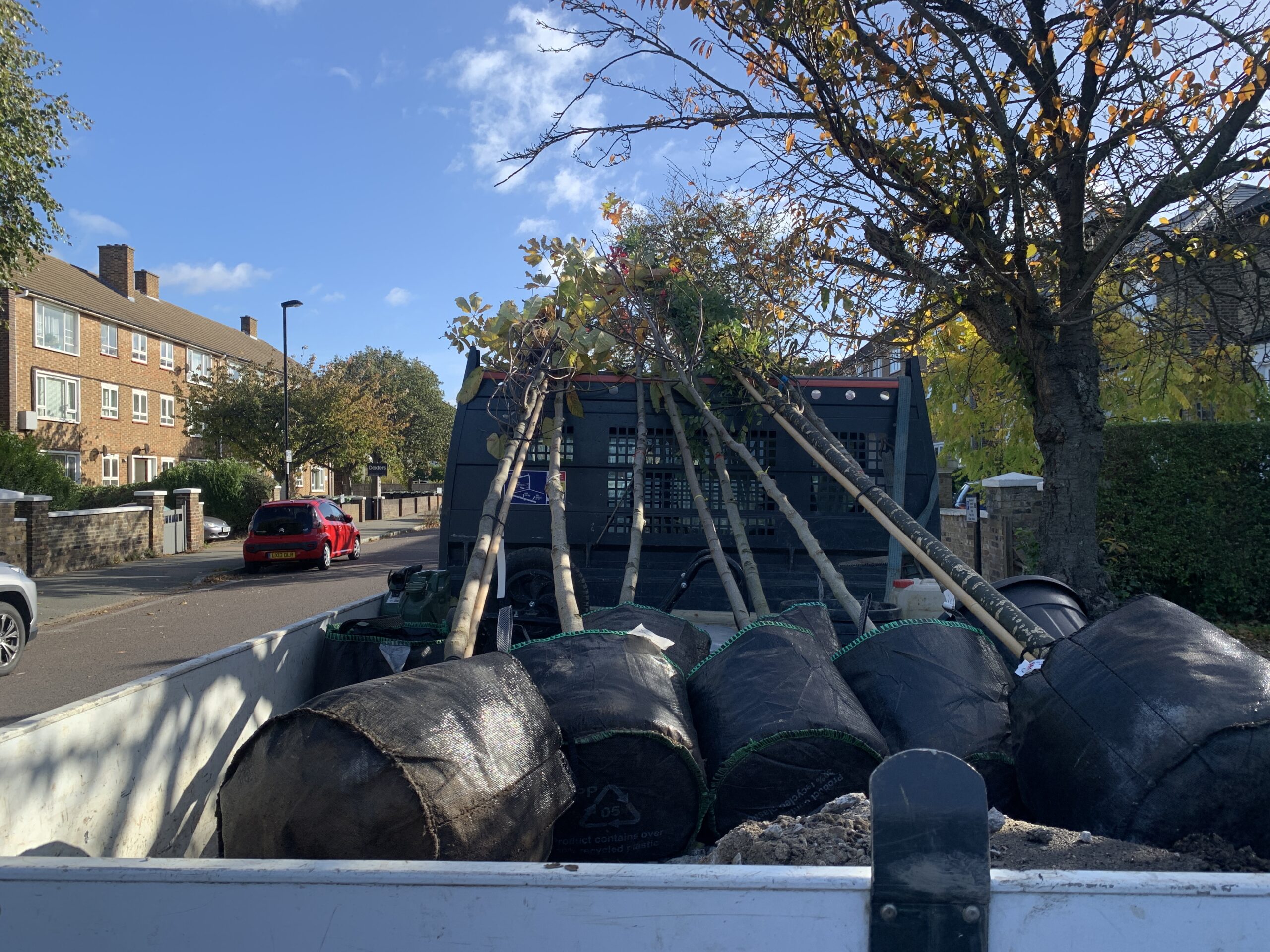
Contractors have started planting trees in Southbrook Road that were paid for by the residents and match-funded by the Lee Manor Society.
Over the last two days they have planted fifteen trees along the road, including one which took a bit of work because of a stubborn block of concrete in the ground. .
The project was masterminded by Charles Batchelor of the Society, who wrote about it here last year.
Southbrook Road’s trees have been especially hard hit in recent years and many had died or were dying.


It costs £395 for each new tree, which also covers the cost of digging up the pavement to accommodate it and the planting. The contractors will also water the trees during dry weather. All the trees will be labelled to show their species and the date of planting.
Residents in Southbrook Road paid £195 each – half the cost – with the balance funded by the Society. It is now investigating the idea of widening the scheme to other roads in the area.

This article has been updated.









